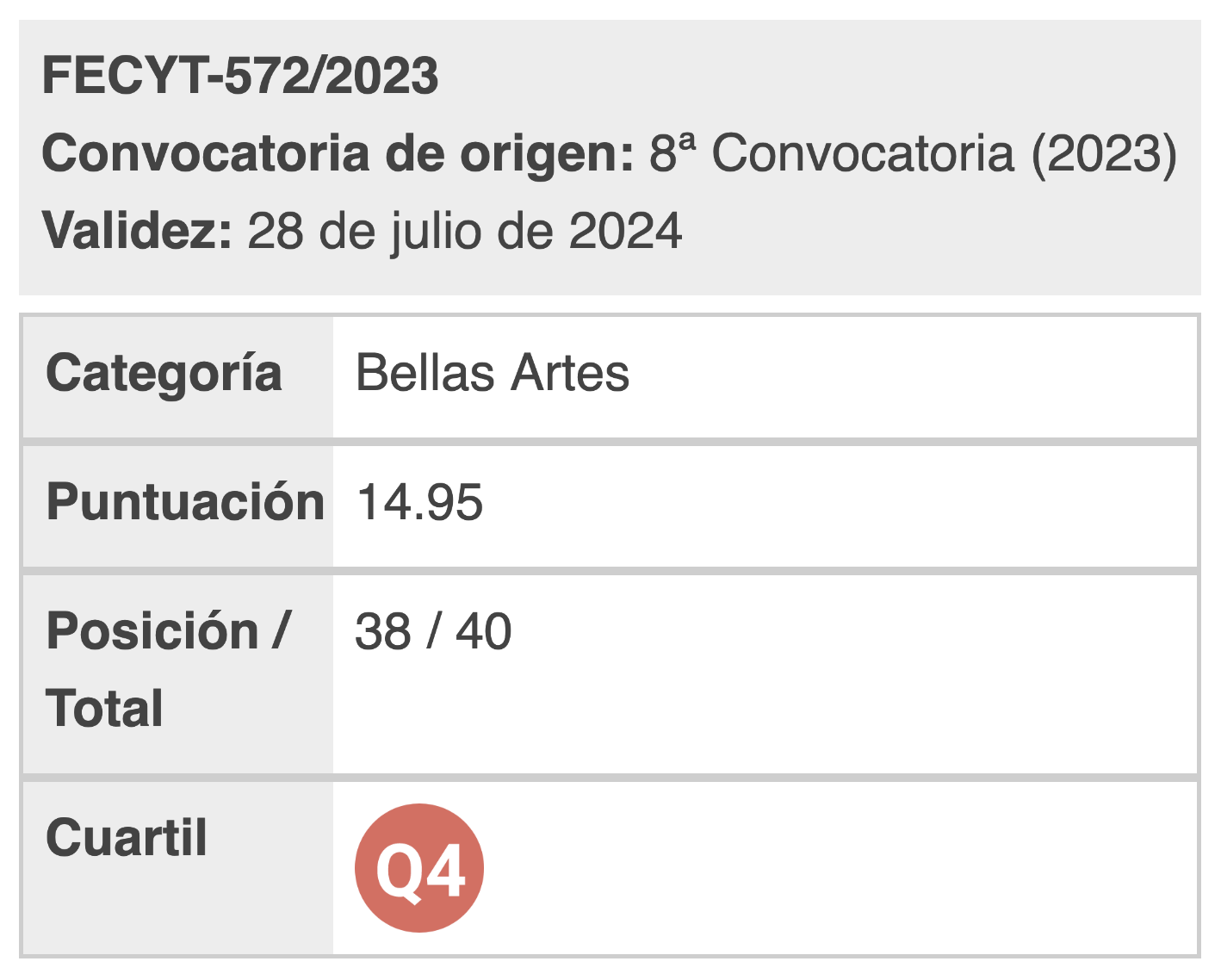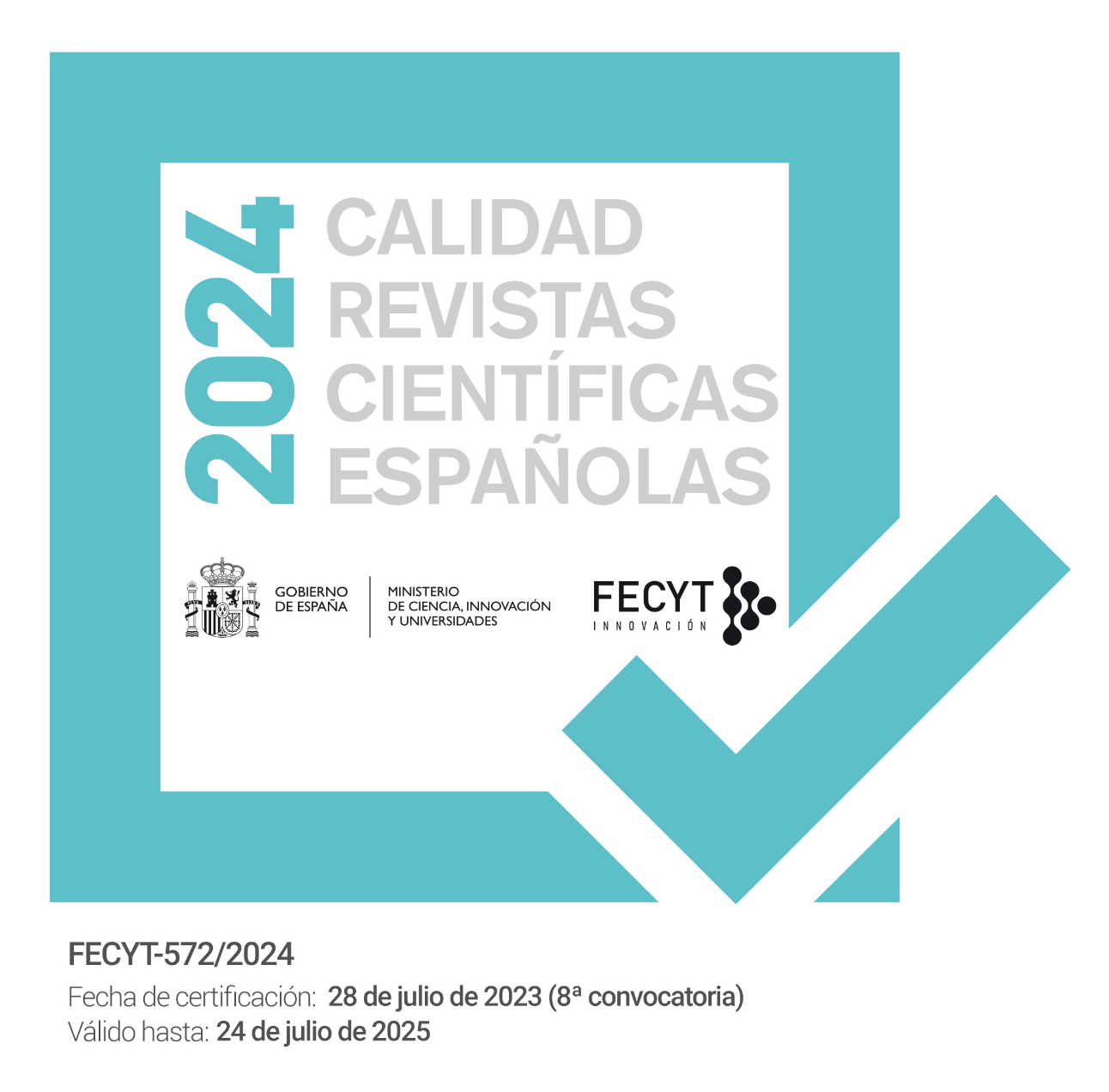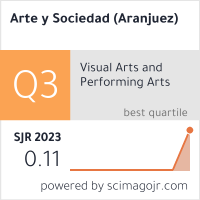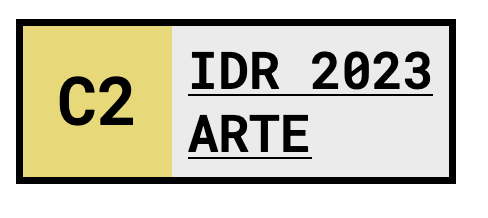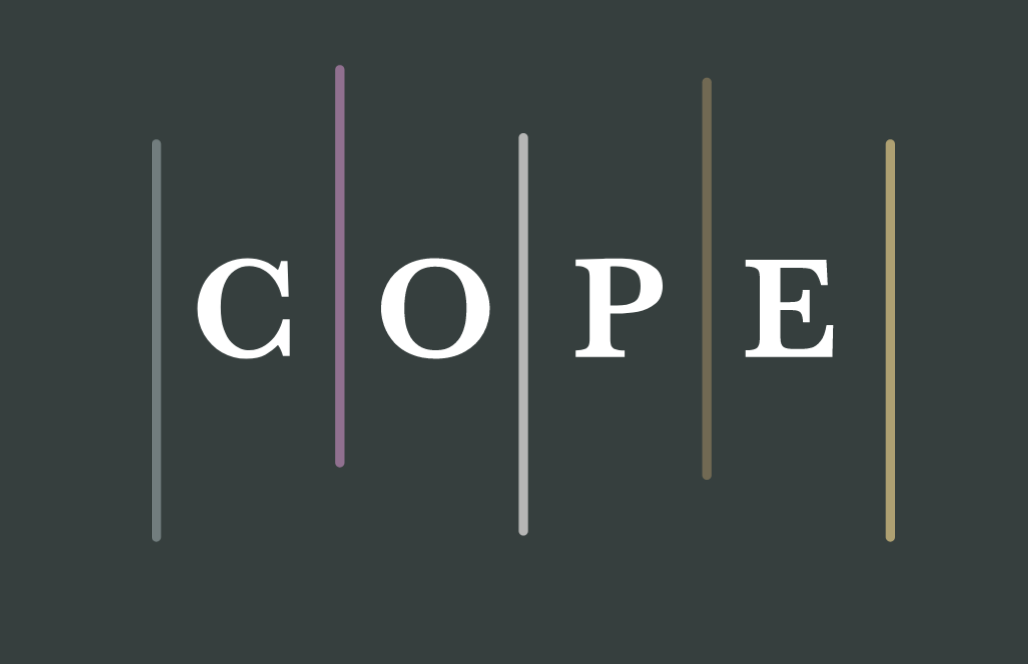#JustForShooting
Theatrical and performative factors of digital bodies
DOI:
https://doi.org/10.5281/zenodo.8183135Keywords:
Digital Identity, Theatre, Performance, PhotographyAbstract
As human beings we are inevitably social, dependent on others for our physical and emotional well-being. The problem today is the difficulty of finding moments of disengagement from the group. We cannot avoid the addictive factor of social networks, as the human need to be accepted and validated leads to an excessive dependence on external approval. It is therefore important to reflect on the veracity of the images shared and what is actually happening. We will expose referents and photographers dealing with these issues, such as Gregory Crewdson and Jeff Wall.
References
Abuín, A. (2008). Teatro y Nuevas Tecnologías: Conceptos básicos. Revista de la Asociación Semiótica Española, (17). 29-56. https://tinyurl.com/36rvccs8
Baudrillard, J. (1981). Cultura y simulacro. Kairós.
Boddington, R. (2019, 27 de agosto). “Photography is still just evolving”: Jeff Wall in conversation with It’s Nice That. It’s Nice That. https://tinyurl.com/2s9kktj5
Castoriadis, C. (2002). La institución imaginaria de la so-ciedad: El imaginario social y la institución (Vols. 1-2). Buenos Aires, Argentina: Tusquets Editores.
Castro, M. (2013). Repeticiones y revisiones: el remake en la fotografía construida. Fotocinema, revista científica de cine y fotografía, 6, 5-41. https://tinyurl.com/2p8as4w4
Caeiro, M. (2018). Ser persona en la sociedad del conocimiento y el espectáculo. Aprendiendo a vivir, pensar y comunicar más allá de los espejos. Arte y políticas de identidad, 18(159-176). https://tinyurl.com/3fn3t8rk
Chichu, A. y López, A. (2022). El enfoque dramatúrgico en Erving Goffman. Polis 00 Dos.
Investigación y análisis sociopolítico y psicosocial, 18 (1). 239-255. https://tinyurl.com/mvzerx65
Chul-Han, B. (2012). La sociedad del cansancio. Herder.
Chul-Han, B. (2021). No-Cosas. Taurus.
Del Prete, A., Redon Pantoja, S. (2020). Las redes sociales on-line: Espacios de socialización y definición de identidad. Psicoperspectivas, 19(1), 1-11. http://dx.doi.org/10.5027/psicoperspectivas-vol19-issue1-fulltext-1834
Gagosian Gallery. (2020, 20 de octubre). Gregory Crewdson. Gagosian Gallery. https://tinyurl.com/3yy6vmtv
García, G. O. (2019). Aproximaciones al concepto de imaginario social. Civilizar, 19(37), 31–42. https://tinyurl.com/k57nf7jc
Gutiérrez, A. (2022). El mundo como imagen. Tan ficticio, tan verdadero. Prometeica, Revista de Filosofía y Ciencias, 25. 128-142. https://tinyurl.com/ycy55x2c
Infante, F. (2021). Estética y fenomenología de la pose. Investigaciones Fenomenológicas, (16), 85–108. https://doi.org/10.5944/rif.16.2019.29677
Lemon, K. (directora). (2016). A Social Life. [Una Vida Social]. [Cortometraje]. Kerith Lemon Production. https://tinyurl.com/45t4evnz
López, T. (2013). La pantalla en escena: ¿Es teatro el ciberteatro?. Revista Letral, (11). 24-39. https://tinyurl.com/y6r2rcke
Martín-Prada, J. (2010). Premios de arte digital. Universidad de Extremadura. https://tinyurl.com/27faav45
Martín-Prada, J. (2018). El ver y las imágenes en el tiempo de Internet. Akal.
Museo Nacional Centro de Arte Reina Sofía. (1994, 14 de septiembre). Jeff Wall. Museo Nacional Centro de Arte Reina Sofía. https://tinyurl.com/3vhkthwd
Ortega y Gasset, J. (1967). La rebelión de las masas. Círculo de lectores.
Puente Bienvenido, H., & Sequeiros Bruna, C. (2019). Goffman y los videojuegos: Una aproximación sociológica desde la perspectiva dramatúrgica a los dispositivos videolúdicos. Revista Española De Sociología, 28(2). https://doi.org/10.22325/fes/res.2018.74
Randazzo, F. (2012). Los imaginarios sociales como herramienta. Imaginautas, 2(2). 77-96. https://tinyurl.com/3tcj4kwa
Rodríguez, L. (2019) . Cíborg. El híbrido cibernético en Gómez, A., León, A., Tamayo, O. y Hernán, S. (Ed.) en 18º Festival Internacional de la Imagen. Universidad de Caldas. 268-277. https://tinyurl.com/4j4fkcdj
Schechner, R. (2000). Performance: Teoría y Prácticas Interculturales. Universidad de Buenos Aires.
Trancón, S. (2006). Teoría del teatro. Bases para el análisis de la obra dramática. Editorial Fundamentos.
Villalobos, A. (2018). Investigación teatral, Revista de Artes Escénicas y Performatividad, 7(10-11). 51-68. https://tinyurl.com/5k5t6kua
Zafra, R. (2016). I like your image. Políticas de la afectividad y cultura de archivo en la red. Visualidades, 14 (1). 130-149. https://doi.org/10.5216/vis.v14i1.43065
Zafra, R. (2019). La (im)posibilidad de un mundo sin párpados. Ensayo sobre la intimidad conectada. Isegoría, Revista de Filosofía Moral y Política, 60. 51-68. https://tinyurl.com/28zr8y4w

Published
How to Cite
Issue
Section
License

This work is licensed under a Creative Commons Attribution 4.0 International License.
You are free to:
Share — copy and redistribute the material in any medium or format.
Adapt — remix, transform, and build on the material for any purpose, including commercial.
Attribution — You must properly acknowledge the authorship, provide a link to the license, and indicate if any changes have been made.
You may do so in any reasonable manner, but not in any way that suggests that you endorse or receive any endorsement by the licensor for your use.
No additional restrictions — You may not apply legal terms or technological measures that legally restrict you from doing what the license allows.



